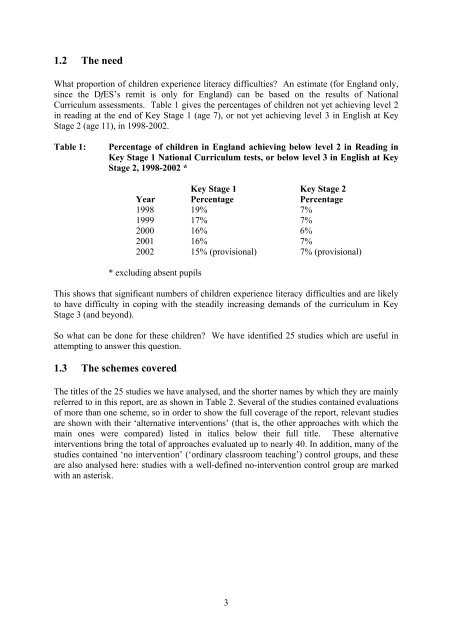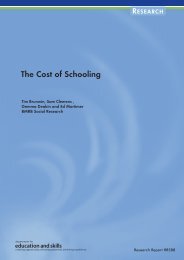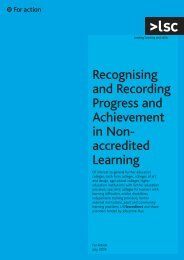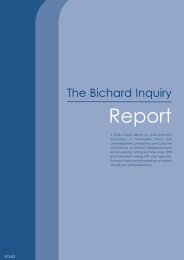What Works for Children with Literacy Difficulties? - Digital ...
What Works for Children with Literacy Difficulties? - Digital ...
What Works for Children with Literacy Difficulties? - Digital ...
You also want an ePaper? Increase the reach of your titles
YUMPU automatically turns print PDFs into web optimized ePapers that Google loves.
1.2 The need<br />
<strong>What</strong> proportion of children experience literacy difficulties? An estimate (<strong>for</strong> England only,<br />
since the DfES’s remit is only <strong>for</strong> England) can be based on the results of National<br />
Curriculum assessments. Table 1 gives the percentages of children not yet achieving level 2<br />
in reading at the end of Key Stage 1 (age 7), or not yet achieving level 3 in English at Key<br />
Stage 2 (age 11), in 1998-2002.<br />
Table 1: Percentage of children in England achieving below level 2 in Reading in<br />
Key Stage 1 National Curriculum tests, or below level 3 in English at Key<br />
Stage 2, 1998-2002 *<br />
Key Stage 1 Key Stage 2<br />
Year Percentage Percentage<br />
1998 19% 7%<br />
1999 17% 7%<br />
2000 16% 6%<br />
2001 16% 7%<br />
2002 15% (provisional) 7% (provisional)<br />
* excluding absent pupils<br />
This shows that significant numbers of children experience literacy difficulties and are likely<br />
to have difficulty in coping <strong>with</strong> the steadily increasing demands of the curriculum in Key<br />
Stage 3 (and beyond).<br />
So what can be done <strong>for</strong> these children? We have identified 25 studies which are useful in<br />
attempting to answer this question.<br />
1.3 The schemes covered<br />
The titles of the 25 studies we have analysed, and the shorter names by which they are mainly<br />
referred to in this report, are as shown in Table 2. Several of the studies contained evaluations<br />
of more than one scheme, so in order to show the full coverage of the report, relevant studies<br />
are shown <strong>with</strong> their ‘alternative interventions’ (that is, the other approaches <strong>with</strong> which the<br />
main ones were compared) listed in italics below their full title. These alternative<br />
interventions bring the total of approaches evaluated up to nearly 40. In addition, many of the<br />
studies contained ‘no intervention’ (‘ordinary classroom teaching’) control groups, and these<br />
are also analysed here: studies <strong>with</strong> a well-defined no-intervention control group are marked<br />
<strong>with</strong> an asterisk.<br />
3

















